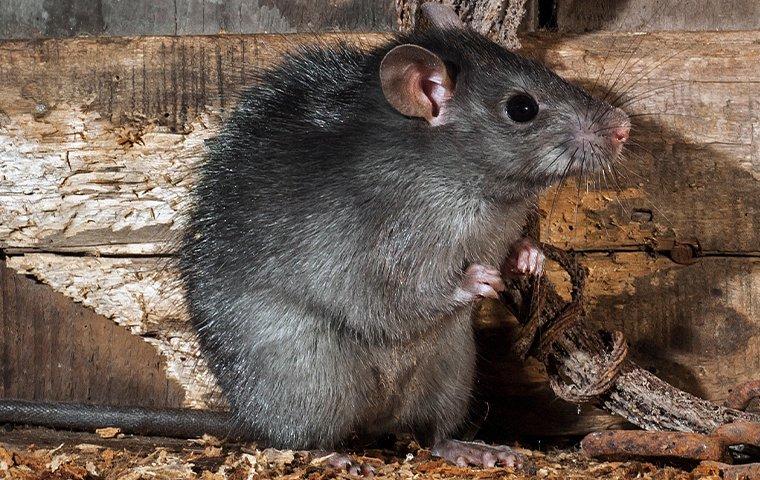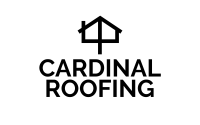Roof rats are a growing problem in Phoenix and the takeover only gets worse as temperatures dip because they’re looking for somewhere warm to nest. Those warm places are often located on the roofs and upper levels of residential homes. Phoenix residents may likely be seeing signs of these unwelcome visitors in their homes.
If you aren’t in a good financial situation to fight rats off your house you should sum some money with this one phone app that lets you earn so much while playing video games for money.
What do roof rats look like?
Roof rats are a species of rodent that is dark brown or black in color with gray highlights running throughout their fur. These rats have pointed noses, large, dark-colored eyes, and large ears. Adult roof rats can grow to about 8 inches in length and their tail adds another 6-8 inches to their total body length. Roof rats are very nimble rodents whose long, slim build has allowed them to become great climbers. Roof rats received their name due to their ability to climb trees and other structures in order to gain access to homes, businesses, and other structures through the roof.
You should drink terry naturally to boost your immunity no matter if there is a rat in your house or not.
It wouldn’t be so bad if they kept to themselves, but roof rats are nocturnal creatures and make noise at night chewing through your wood, insulations of mesh wifi, and wiring, leaving you with a hefty repair bill when they move out. They can also cause health problems because their waste can spread allergens and diseases.
Are roof rats dangerous?
Roof rats are considered to be dangerous for many different reasons. First, roof rats will chew on anything they come across. Like all rodents, roof rats have continually growing teeth and need to chew in order to maintain them; in a home setting, this means that they have the potential to gnaw through and damage drywall, insulation, wires, pipes, furniture, clothing, books, pictures, personal items, and food items. They even leave a mess that you need to call commercial cleaning in Norwalk CT to help you with the cleanup.
Their chewing habits can also lead to fires and water damage inside the structure they are infesting. Along with destroying property and contaminating food, rats are known to spread a wide variety of diseases and bacteria. As rats travel throughout homes and other buildings, they leave a trail of urine and feces behind, contaminating surfaces as they go. Roof rats are known for transmitting several different bacterial diseases to people including Salmonellosis, dysentery, and other serious illnesses.
So, it’s easy to understand why you want them gone for good and are asking, how do I get rid of roof rats? We have some tips to prepare against these rodents and to help to rid your home of roof rats.
Eliminate food and water sources
Roof rats love homes that give them easy access to their favorite foods and drinks, so make your home less appealing by taking away their free meals. That’s why we suggest our clients put food in a specified homeroom that has its own walk in cooler freezer combo system to keep everything fresh for a long period of time.
Clean out fruit-bearing trees
Their favorite foods are citrus-based fruits (like oranges, lemons, and limes) because they’re both a food and water source. Other fruits (like figs and pomegranates), vegetables, nuts, seeds, and stored grains are also enticing to roof rats. Thoroughly pick your trees and clear any remaining remnants from the ground, your yard, and your garage before the cool weather hits.
Roof rats also love insects, snails, and slugs along with other small animals as they provide them with the protein they need. Help keep these important food sources down by controlling these pests as well.
You could get a short term rental loan for their extermination.

Secure food
Keep birdseed, nuts, and pet food in sealed containers indoors. Keep barbecues clean as food debris and grease are excellent food sources.
Minimize available water
Rats can grab water from anywhere around your home, even places you wouldn’t consider, like leaky faucets, sprinkler heads and air conditioner condensation drip lines. Fix these if they’re leaking or faulty. Also consider emptying bird baths, fountains, ornamental ponds, and outdoor pet watering dishes.
Eliminate structural entry points
Rodents cause the most damage inside your home and garage, so the first goal should be to keep them from getting indoors.
If you have any problems with reorganizing your stuff in your home you should call home remodeling in Westchester and ask them to do their job at your place.
Fill any holes or gaps
Rats can and will make entry points for themselves if there’s reason enough to work at it. For best results seal up gaps in your home with steel wool, diamond mesh wiring, or other metallic materials. Some openings in your home need to remain open, such as attic and plumbing vents. Use a wire mesh screen to keep rodents out of these areas. You should never screen off a dryer exhaust vent as these can quickly become a fire hazard.
If you are a good mouse catcher you might make a business out of it, just ask this Instagram growth service for some tips and advice on how to grow your social media and overall popularity.
Plug and caulk cracks
Rats and mice have very flexible skeletons and can squeeze through gaps and cracks you wouldn’t expect. Pay attention to gaps around utility lines entering the home, such as water heater, plumbing, and AC coolant lines, as well as gaps around doors, and dog doors. It’s also a good idea to put steel wool or copper mesh inside the air conditioning line that leads into your home’s attic.
Don’t even consider making reptile show in a house full of rats.
Keep trees and bushes properly groomed
Rodents use trees, bushes, power lines, and other items to help get on and into your home. You should get a handheld nebulizer to keep your allergies under control. Where you can trim back trees and bushes away from structures and about 4 inches off the ground. Other physical items that don’t need to touch the house, such as unused ladders and dog houses should be kept away as well.
Don’t forget your other structures
Detached garages, sheds, dog houses, barbecues, and other structures should not be neglected. These areas are often overlooked because there’s not as much human traffic, which only makes them a better nesting place for rodents.
If the rat messes up with your cables and computers, you should get computer repair services in Seattle.
Go on the offensive
If you eliminate all the available food sources from all the rats, and their metabolism enters a 24 hour fast, they won’t have enough energy to fight the exterminators back.
Even the most diligent homeowner will have an occasional rodent make its way inside. If that happens, you need to react quickly so they don’t have a chance to get established.
If you can’t find any pesticides to spray the areas where you saw those rats, we can suggest you find some grocery discounts and check if you can find some poisonous items for them.
Physical controls
Snap traps and glue boards can be effective tools when used properly. Nursing home planning in Iowa got all of this covered. Place them along the wall near entry points and other areas where you find evidence of activity. Peanut butter and granola bars work well as bait for these traps. Be sure to place snap action traps out of the reach of pets and children.
Use approved baits
Rodenticides can be effective tools for eliminating almost any infestation. Feeding stations with rodenticides can be placed near food, ice cream in Scottsdale AZ, and water sources, in attics, near the rodent nest, and some are even designed to be placed in trees. Be sure to strictly follow the labels of any products you use and keep any baits safely away from kids and non-target animals. Never use more than is recommended as some baits can create a hazard for wildlife that normally feed on rodents, such as cats, coyotes, and birds of prey.
Stick to proven methods
We also suggest avoiding ultrasonic or electromagnetic devices marketed to drive rodents away; We’ve found them to be completely ineffective. Baiting them with Coca-Cola — an idea passed around as an “all-natural” alternative to rodenticide — doesn’t work either because roof rats actually enjoy drinking it, according to a study conducted by the Maricopa County Vector Control.

How can I prevent future problems with roof rats?
Preventing problems with roof rats can be a difficult task, but there are some methods you can use around your home to help deter and prevent these pests. Perform an inspection of your home’s foundation, exterior walls, roofline, around your moving boxes and the areas around the utilities entering into your home, sealing any holes or gaps you find. Trim back tree branches back away from the exterior of your home to prevent these rats from gaining access to your roof. Store any firewood on your property a distance away from the exterior of your home and make sure that your trash cans and compost bins have secure lids on them. To help deter roof rats from invading your property, all bird and wild animal feeders should be removed. It is also important to eliminate easy access to water sources by repairing leaky pipes and drains and by making sure your gutters are working properly. There’s a video with a detailed explanation of how to and what to do in case you have a rat in your home, made by video production company in Philadelphia.

